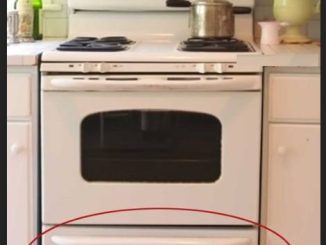For many skin problems, there are treatments available from your doctor or dermatologist that are very effective. The only problem is that they can be costly and can even sometimes do damage to the healthy skin around them. Perhaps these traditional treatments can even leave scars.
Thankfully, natural skin care has many options to first try to address these conditions at home before. As always, monitor your skin for signs of unwanted side effects. If the problem doesn’t go away, go see your doctor or dermatologist.
Age Spots and Hyperpigmentation

Over the course of our lives, we are exposed to many elements. The most prominent of those is our own sun. Though we need sunshine for our health, the sun’s ultraviolet (UV) rays can be highly damaging to the skin. Often that damage we don’t see until decades later, in the form of what colloquially we call age spots. Age spots are simply hyperpigmentation of the skin, aka the darkening of certain patches or spots, caused by sun exposure and damage.
The first, and most important, aspect of age spots is prevention. From the time you are young, you should be using sunscreen with a minimum SPF (sun protection factor) of 30 every day, even in the winter and when it’s cloudy. On top of that, you should be wearing sun-protective clothing, like hats and sunglasses. Once you’ve already got some age spots showing up, however, there are a few natural skin care remedies that you can use to help decrease them.
Natural Remedies for Age Spots
- Apple Cider Vinegar: Studies show that the acetic acid in apple cider vinegar (AVC) may lighten skin pigmentation. To use ACV on the skin, you first need to combine it with equal parts water, otherwise, it will be too harsh. Apply the mixture to dark patches and leave on for two to three minutes. Rinse thoroughly with lukewarm water and repeat twice daily.
- Aloe Vera: A 2012 study found that the aloin in aloe vera is a natural depigmentation compound. Apply to the affected areas before bed and rinse off the next morning.
- Green Tea Extract: Research shows that green tea extract can provide effective depigmentation for the skin. Purchase green tea extract and apply according to the directions. Some say you can use green tea bags, but there isn’t any evidence that this actually works.
- Black Tea: A study done on guinea pigs found that black tea lightened dark spots. There have been no human studies. If you wish to try, soak black tea leaves in a cup of boiling distilled water for two hours. Strain and use a cotton ball to apply to your face once per day.
- Licorice Extract: This extract has been shown to lighten hyperpigmentation caused by sun exposure. This is because of its specific active ingredients. Look for licorice-containing creams and apply as directed.
- Orchid Extracts: Apply orchid extracts to dark spots for eight weeks noticeably reduced the size and appearance of them. You can find products that contain orchid extract, such as masks, creams, and scrubs.
- Lactic Acid Peels: Lactic acid, which is found in milk products, is an effective lightening agent. It works like a glycolic peel but is better for sensitive skin. You will need to apply sunscreen after often after a lactic acid peel. It is also not recommended for people with eczema, rosacea, or psoriasis.
There are other options as well, including retinol-based skin care products or those containing hyaluronic acid. You can also see a dermatologist about medical procedures such as microdermabrasion, freezing (cryotherapy), chemical peels, and laser treatment. These should all be done by licensed dermatologists.
Skin Tags

Skin tags are small, benign growths that often appear on areas of the body where skin rubs against skin, like the neck, armpits, groin, and even eyelids. While they are completely harmless, many people find them unsightly and want them removed. Thankfully, there are some effective natural remedies you can try at home.
Natural Remedies for Skin Tags
- Apple Cider Vinegar: The acetic acid in ACV can help dry out and shrink skin tags. Soak a cotton ball in undiluted ACV and apply it directly to the skin tag, securing it with a bandaid. Leave on overnight and rinse in the morning. Repeat daily until the skin tag falls off.
- Tea Tree Oil: Tea tree oil has natural antiseptic and antimicrobial properties that can help remove skin tags. Dab a small amount directly onto the skin tag using a cotton swab. Cover with a bandaid and leave on overnight. Repeat daily.
- Garlic: Garlic contains allicin, a sulfur compound with anti-inflammatory and skin tag-reducing properties. Crush a fresh clove of garlic and apply the juice directly to the skin tag, covering with a bandaid. Leave on for several hours before rinsing. Repeat daily.
- Baking Soda: The abrasiveness of baking soda can help dry out and eventually remove skin tags. Make a paste with baking soda and water and apply it directly to the skin tag, covering with a bandaid. Leave on overnight and rinse in the morning. Repeat daily.
- Castor Oil: Castor oil is a natural skin conditioner that can help shrink skin tags. Soak a cotton ball in castor oil and secure it to the skin tag with a bandaid. Leave on overnight and rinse in the morning. Repeat daily.
Be patient when using these natural remedies, as it may take several weeks or even months for the skin tag to fully disappear. If a skin tag becomes irritated, infected, or grows rapidly, see a dermatologist right away.
Blackheads

Blackheads are a common skin issue caused by clogged pores. They appear as small, dark bumps on the surface of the skin, usually on the nose, chin, and forehead. While they may seem gross, blackheads are not a sign of poor hygiene – they are simply a buildup of oil, dead skin cells, and bacteria trapped in the pore.
Natural Blackhead Remedies
- Baking Soda: Make a simple paste with baking soda and water and gently scrub it onto your skin using circular motions. The abrasiveness will help unclog pores and remove blackheads. Rinse thoroughly and moisturize after.
- Honey: Raw, unprocessed honey has natural antibacterial and pore-clearing properties. Apply a thin layer of honey to your face, let sit for 15-20 minutes, then rinse. The sticky texture helps draw out impurities.
- Clay Masks: Bentonite or kaolin clay masks are excellent for deep cleaning pores and absorbing excess oil that leads to blackheads. Apply the mask, let it dry, then rinse. Use 1-2 times per week.
- Steam Treatments: Exposing your skin to steam helps open up pores and loosen blackheads so they can be more easily extracted. Lean over a bowl of hot water (not boiling) for 5-10 minutes, then gently use a blackhead extractor tool.
- Exfoliating Scrubs: Use a gentle, non-abrasive scrub containing ingredients like jojoba beads or bamboo to slough off dead skin cells and unclog pores. Focus on problem areas and avoid over-exfoliating.
Be very gentle when removing blackheads, as excessive picking or squeezing can cause skin damage and inflammation. If blackheads persist or your skin becomes irritated, see a dermatologist.
Warts

Warts are small, rough growths caused by a virus that infects the top layer of skin. They are contagious and can spread through direct contact or shared surfaces. While warts are generally harmless, many people want to get rid of them for cosmetic reasons.
Natural Wart Remedies
- Apple Cider Vinegar: The acidity in ACV can help dry out and remove warts. Soak a cotton ball in undiluted ACV, secure it to the wart with a bandaid, and leave on overnight. Repeat daily until the wart falls off.
- Garlic: Garlic has natural antiviral properties that can help fight the HPV virus that causes warts. Crush a fresh garlic clove and apply the juice directly to the wart, covering with a bandaid. Leave on for several hours before rinsing. Repeat daily.
- Duct Tape: Covering a wart with duct tape can help suffocate and remove it. Apply a small piece of duct tape to the wart, leaving it on for 6 days. Remove, soak the area in water, then file down the wart with an emery board. Repeat this process until the wart is gone.
- Vitamin C: The ascorbic acid in vitamin C can help break down the protein structure of warts. Crush a vitamin C tablet into a powder and mix with a little water to form a paste. Apply directly to the wart and cover with a bandaid. Repeat daily.
- Pineapple Juice: An enzyme in pineapple juice called bromelain has been shown to help dissolve warts. Soak a cotton ball in pineapple juice and apply it directly to the wart, securing with a bandaid. Leave on overnight and repeat daily.
Be patient when using natural wart remedies, as it can take several weeks or months for the wart to fully disappear. See a doctor if the wart is painful, grows rapidly, or spreads to other areas of the body.
Moles

Moles are small, colored growths on the skin that are usually harmless. However, changes in the appearance of a mole can sometimes be a sign of skin cancer, so it’s important to monitor them closely. While mole removal is typically done by a dermatologist, there are some natural methods that can help lighten or fade their appearance.
Natural Mole Remedies
- Castor Oil: The fatty acids in castor oil can help flatten and fade moles over time. Apply a small amount of pure, cold-pressed castor oil directly to the mole using a cotton ball. Cover with a bandaid and leave on overnight. Repeat daily.
- Baking Soda: Making a paste with baking soda and water and applying it to the mole can help dry it out and reduce its appearance. Let the paste sit for 10-15 minutes before rinsing. Repeat this process 1-2 times per day.
- Apple Cider Vinegar: The acidity in ACV may help break down the skin cells that make up the mole. Soak a cotton ball in undiluted ACV and secure it to the mole with a bandaid. Leave on overnight and rinse in the morning. Repeat daily.
- Aloe Vera: The soothing, moisturizing properties of aloe vera can help minimize the appearance of moles. Break off a fresh aloe vera leaf, extract the gel, and apply it directly to the mole. Let it soak in and repeat 1-2 times per day.
- Tea Tree Oil: Tea tree oil has natural antibacterial and anti-inflammatory effects that may help reduce the size and color of moles. Dip a cotton swab in tea tree oil and gently dab it onto the mole. Cover with a bandaid and leave on overnight. Repeat daily.
Be very cautious when attempting to remove or treat moles at home, as improper handling could lead to irritation, infection, or the spread of cancerous cells. Consult a dermatologist if you have any concerns about changes in the appearance of your moles.
While common skin problems like age spots, skin tags, blackheads, warts, and moles can be frustrating, there are many effective natural remedies you can try at home before resorting to more expensive and potentially risky procedures. From apple cider vinegar and aloe vera to baking soda and tea tree oil, these natural ingredients can help treat a variety of skin issues safely and affordably.
Of course, it’s always important to monitor your skin closely and see a dermatologist if any problems persist or worsen. But by incorporating these natural skin care tips into your routine, you can take control of your complexion and boost your confidence.


